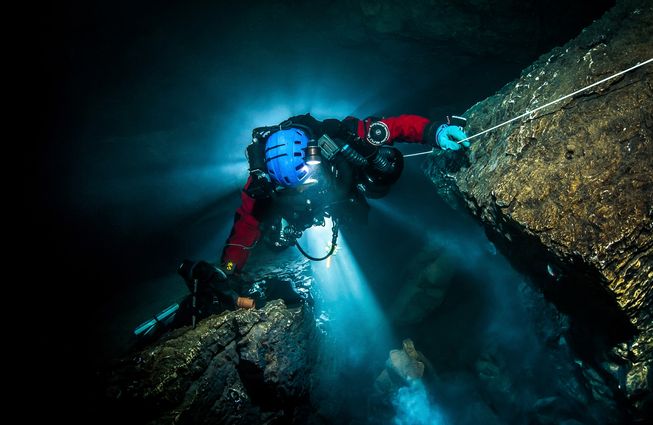A team of explorers has announced the discovery of the world’s deepest underwater cave in the Czech Republic where they recorded a depth of 404 meters.
Polish explorer Krzysztof Starnawski, who led the team, first explored the cave — named Hranická Propast and located near the Czech town of Hranice — in 1999, and instantly knew it was an unusual find. He told National Geographic, which sponsored his most recent expedition, that hot water saturated with carbon dioxide bubbled up like a volcano, and made his exposed skin itch.
A series of dives over the years hinted at the abyss’ depth. In 2014, he reached 656 feet, thinking he had found the bottom, only to discover a very narrow opening that led to a vertical tunnel. The following year, some of the rock in the cave had crumbled, widening the opening and making it possible for him to squeeze through. He reached a depth of 869 feet and released a probe, which at 1,214 feet landed on what was probably a pile of debris from the collapsed passage above.
Each time he dived down to such depths, Starnawski had to spend between two and four hours in a dry decompression bell; the only way to explore much deeper was to deploy a Remote-Operated Vehicle (ROV), which his team did during its record-setting mission Tuesday.
Starnawski dived to approximately 660 feet, deploying a line for the ROV to follow that enabled it to navigate narrow passages and past fallen logs and other debris; thereafter, the robot, which was guided by above-ground technicians, was on its own.
The depth of 1,325 feet that the ROV reached was 39 feet deeper than the previous record-holder — a flooded sinkhole in Italy called Pozzo del Merro. In fact, Hranická Propast may yet prove deeper still. In a statement, the Czech Speleological Society said when the robot reached its deepest level, “it was as deep as its rope could go, but the bottom was still nowhere in sight.”
Eileen E. White













